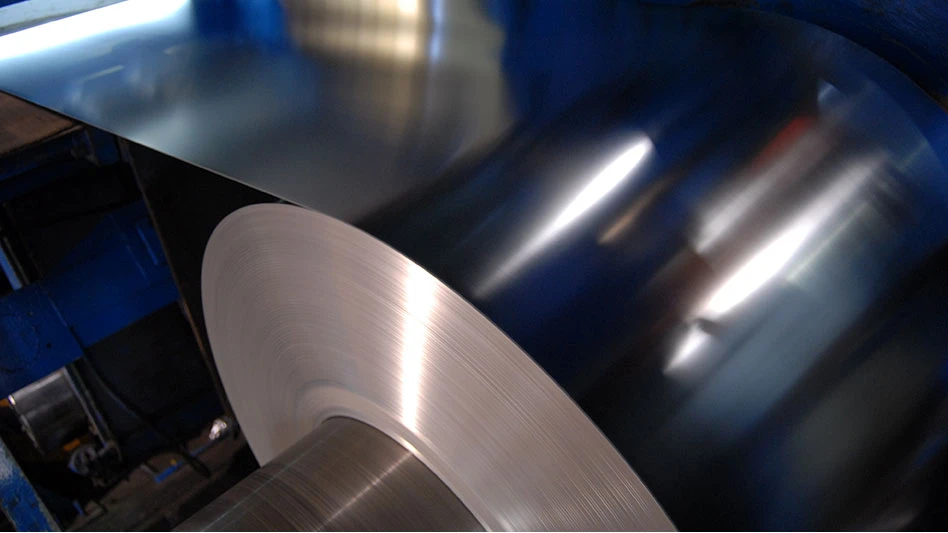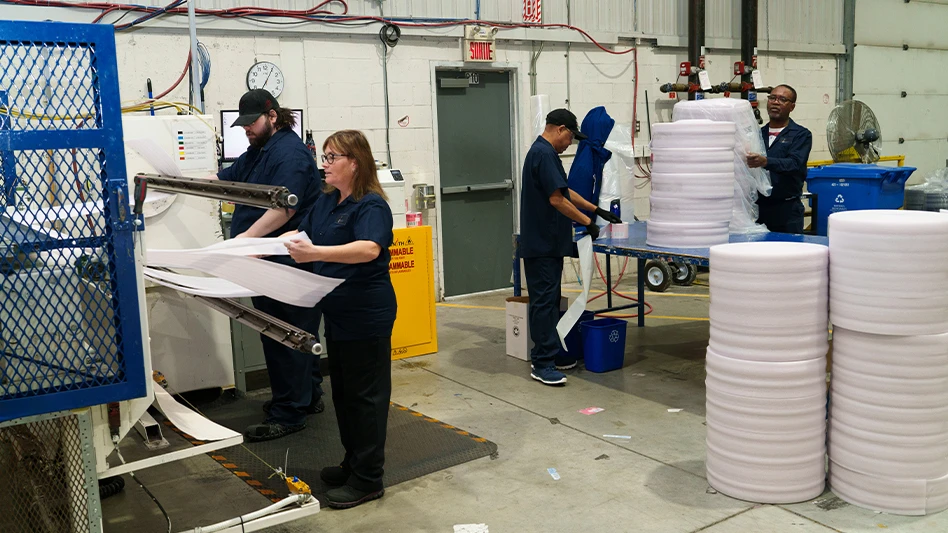
Olgin+Efune Recycling Co.
When Olgin+Efune Recycling Co. (OERC) added an electric material handler to its fleet in 2019, personnel safety was a driving factor behind that investment. The company purchased an E9.6 material handler from Sierra International Machinery.
Chad Olgin, co-president of the Phoenix-based business, says the electric material handler is being used to feed a processing line that is housed in a building on-site. Before adding the electric model, the company had used diesel material handlers and mobile equipment in that building. To reduce fumes and ensure a cleaner work environment in that building, Olgin says the company chose to use the E9.6 model.
“We wanted something that had no emissions,” Olgin says.
Recycling Today followed up with Olgin to learn more about making the switch to an electric material handler and what ways using electric models could benefit recyclers.

Chad Olgin
Recycling Today (RT): Tell us a little bit about the E9.6 material handler. How is it being used at OERC?
Chad Olgin (CO): We purchased a Sierra E9.6 material handler, and I bought an extra battery when I bought the machine. One of the benefits is I don’t have to put the machine down to refuel. The downtime is much less with an electric vehicle than a diesel machine because I don’t have to travel far to swap out a battery. I can do that right then and there, and it takes all of five minutes. We’re very happy with our machine. It operates inside. We take it outside occasionally, but one of the downfalls to operating an electric vehicle in Arizona where it’s 120-plus degrees sometimes is the heat and an electric vehicle sometimes shorts out. Arizona might just be an extreme place for it, but I know electric equipment is still relevantly new. I’m sure as the technology improves, it will get better and have fewer issues. For a starting point, it works pretty good for us.
RT: What are the benefits of electric material handlers when compared with diesel models?
CO: I’m an advocate of electric equipment over diesel equipment. It just works better. It’s easier to turn on. It’s easier to teach people how to operate it because there are less things in the machine to worry about, and there’s less stuff that they have to check. So, in general, when your guys come in and everybody is putting preventive maintenance on their equipment, if you’re going to a diesel-powered machine you have to check lots of fluids and you want to make sure everything in your machine is good and you don’t hear any weird sounds. With an electric machine, it’s just a motor and other than checking bearing grease, that’s all you have to do on it.
It’s also a fast-moving machine. You touch it and it moves quickly. It also has no emissions, so it doesn’t produce an odor of any kind. So, it can work in a building that might not have the best ventilation. Even though our building is well ventilated, I feel good knowing that if we have an employee who is working in close proximity, they’re not covered in fumes from the machine.
If I had it my way, yes, I would put all electric equipment at our facility. But having a bunch of cords running around or batteries lying in the heat is not the best thing. If I had stationary machines, then yes, I think electric would be the best. My baler is electric and my processing equipment is all plugged into a wall.
RT: What kind of material do you move with the E9.6 material handler?
CO: We use it for nonferrous only. This machine could only lift about 1,500 pounds, so less than a ton. Nonferrous weighs less than a lot of ferrous grades and is not as heavy to move. From a steel point, trying to load a truck of steel or an end dump of steel to go to a steel mill, 1,500 pounds per grapple would take a lot of time. We could load a truck to a steel mill in 20 minutes maximum with a diesel-powered material handler. If I had to use my electric one, I’m sure it would take an hour if not more. That machine is probably not the best machine to use for a steel application, but maybe if there was a bigger one or something that had a little more lifting capacity, then maybe it would increase the loads. This would also be an incredible machine for somebody processing paper and plastic because it is much lighter and faster.
RT: What is maintenance like on an electric material handler?
CO: The main thing we check on the electric machine is the water level on the battery to make sure that it has ample water to not overheat. When you have a diesel-powered machine, you have to check all the fluids every single morning and you have a diesel engine to worry about as opposed to an electric motor. [There are] less moving parts on an electric motor, and it’s much easier to maintain. My maintenance managers would take 20 minutes every day to go through a diesel machine to make sure everything is good at least, whereas on an electric it can take five minutes to check it out and make sure everything is level.
RT: What do recyclers need to be aware of if they invest in an electric material handler?
CO: I would say the electric material handler has more safety features than the diesel options. You can get into a diesel model, turn it on, put the safety lever down and operate. When you get into electric cranes, there are three or four safety switches that have to be hit and engaged at all times in order for the machine to work. In our Sierra [model], there are a lot of safety mechanisms built-in. We’re a very safety-conscious company, so we’re completely fine with having extra things put into the equipment to be sure we bring attention to the operator. But if you don’t like having all these extra switches and gears to get your machine moving, then maybe it’s not the right machine for you.
An electric machine, I think it’s a great investment. They are expensive. You can buy a machine that is diesel that does the same thing for much less from a lifting capacity point. But if you want to make an investment in the environment and you’re trying to do better for the whole world, I think this is the right way to go.
Latest from Recycling Today
- Nucor names new president
- DOE rare earths funding is open to recyclers
- Design for Recycling Resolution introduced
- PetStar PET recycling plant expands
- Iron Bull addresses scrap handling needs with custom hoppers
- REgroup, CP Group to build advanced MRF in Nova Scotia
- Oregon county expands options for hard-to-recycling items
- Flexible plastic packaging initiative launches in Canada





